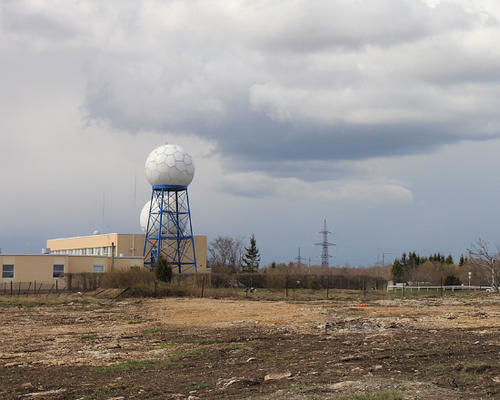High-resolution data for climate models
Climate modelers benefit greatly from high-resolution climate data, i.e. data that have a high spatial and/or temporal resolution. A new generation of climate models can thus achieve better small-scale predictions due to new model algorithms and increased computing capacity. For example, the available data have been used to better predict severe thunderstorms or to better understand physical processes.
The data
The modeling data in this publication cover parts of western Germany as well as Belgium, the Netherlands, and Luxembourg. The dataset contains all modeled results for April-August during 1970-1999 and 2070-2099, the latter under the RCP8.5 warming scenario. The model results are based on existing modeling with lower spatial resolution: the existing models were recalculated to a high-resolution spatial resolution of 0.02° (2.2km x 2.2km). The modelings have different temporal resolutions. For the months of April and May, the data are available with a 3h resolution and for the summer months with a 1h resolution. Soil related data and surface flux data are usually available at 3h resolution.
In addition to the published data, the data are available in the standardized format of the "Climate Model Output Rewriter" (CMOR) from the authors or the meteorological institute of the FU Berlin. A detailed description of the dataset can be found at the following link (in English).
Publication of the data set: Meredith EP, Ulbrich U et al (2019) http://hdl.handle.net/21.14106/e2ff97eb79601bf7ea6350e29b4178b2797bda73
Research Results
The most intense precipitation events - especially warm season thunderstorms - are expected to become more intense in a warmer climate. Thunderstorms so far occur most frequently in the late afternoon. Due to their high spatial resolution, the latest generation of climate models - so-called "convection-permitting models" - can simulate convective processes directly (which was not possible with older generations of climate models), making them an ideal tool for studying changes in intense thunderstorms. The authors of this study note that in their study region (see data description above), future intensification of heavy rain events is not evenly distributed across all hours of the day, but has a strong diurnal signal, with the strongest intensification observed in the early morning hours. The implication of this diurnally uneven intensification is that, under strong climate change, the diurnal convective maximum for extreme events could shift from late afternoon to night and morning in some regions.
Journal article publication: Meredith EP, Ulbrich U et al (2019) https://doi.org/10.1029/2019GL082385
Hydrologic modelers benefit greatly from, among other things, high-resolution climate data at the catchment scale - especially for studying the effects of extreme precipitation. To achieve these high resolutions while maintaining data quality, dynamically downscaling to a spatial resolution where convective processes can be directly simulated offers numerous advantages, but often comes at a prohibitive computational cost. To reduce the overall computational cost and instead dynamically downscale only those days for which there is an increased probability of extreme precipitation in a catchment, a flexible and transferable classification algorithm was developed to identify potential extreme days (PEDs) and omit days when intense precipitation is not expected. As a result, the computational effort is reduced by over 90%.
Journal article publication: Meredith EP, Rust HW et al (2018) https://doi.org/10.5194/hess-22-4183-2018
As shown in Meredith et al. (2019), the amplification of summer heavy precipitation due to climate change is not evenly distributed throughout the day, but there is a distinct diurnal cycle. However, this result was only demonstrated for a single region and with a single climate model in Meredith et al (2019). Studies over several European regions and with several climate models of different resolution show that this diurnal cycle does not occur everywhere, but rather in regions with similar latitude: from France to Central and Eastern Europe, but excluding the Alpine region. The amplitude of the diurnal cycle is particularly prominent in convection-permitting climate models. Lower resolution climate models can also represent this feature, but with less clarity.
Journal article publication: Meredith EP, Ulbrich U et al (2021) https://doi.org/10.1088/2515-7620/abf15e
Texts modified from: Meredith EP, Rust HW et al (2018) https://doi.org/10.5194/hess-22-4183-2018
